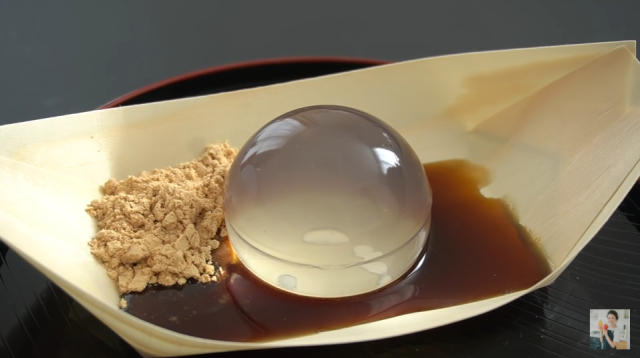
Find out which ingredient will give you the transparent treat you’re looking for.
The Japanese “water cake” (mizu shingen mochi) is a beautiful dessert that has captivated social media for years thanks to Yamanashi prefecture’s Kinseiken Seika Company.
And while it looks like something that would be incredibly difficult to make outside of a restaurant kitchen, YouTuber Yukari of Egg Kitchen tried her hand at making it at home using three different base ingredients.
She wanted to see which would give her the most water-like cake: traditional powdered agar, Japanese powdered agar (kona kanten), or powdered gelatin.
▼ We’ve written out the recipes for all three of her experiments below,
but follow along in the video here for more visual instructions!
To make the classic water dome shape of mizu shingen mochi, you’ll need something like a round ice ball tray. Yukari found two different kinds, one of which she got at the 100-yen store Daiso. She also says you can use a round dish to get a half-circle shape.
▼ The ice ball maker she got from Daiso.
The first recipe she started with was the one made with traditional powdered agar.
The necessary ingredients are 300 milliliters (10.1 fluid ounces) of water, 8 grams of agar, and 10 grams of sugar. Yukari also recommends black honey and kinako (roasted soybean flour) for toppings to enjoy it the traditional way.
▼ Only three ingredients for the base? That seems doable.
The first thing is combine the sugar and agar powder together in a bowl. Combine it thoroughly because it’s easy for the agar to clump.
Then add the water little by little. Yukari recommends adding it in three parts, making sure the ingredients are thoroughly combined before adding more water.
▼ This is what the mixture should look like after adding the first bit of water.
Once all the water has been combined with the sugar and agar, transfer the mixture to a saucepan and bring it to a boil on medium heat. Mix it well as it heats up.
When it comes to a slight boil, keep mixing it for about one more minute on low heat. Turn the heat off, transfer the water cake mixture to the containers you’ve prepare, and chill for three hours in the refrigerator.
▼ The traditional powdered agar one turned out perfectly, like an actual water droplet.
Next, Yukari used Japanese powdered agar (kona kanten).
While traditional agar is made from locust bean gum and a type of seaweed called carrageenan, Japanese powdered agar is made from ogonori and dengusa varieties of seaweed. The level of transparency between varieties of agar differs, so Yukari recommends trying a few varieties out.
This recipe calls for 300 milliliters of water, 2 grams of Japanese powdered agar, 10 grams of sugar, and the same toppings as before: black honey and kinako.
▼ Only a bit of powdered agar is needed to make this one.
The process is much the same as before: first, combine the sugar and Japanese powdered agar together in a bowl thoroughly. Then add and mix in the water in two parts, though Japanese powdered agar is less prone to clumping than traditional agar.
When everything is combined, transfer to a saucepan. Bring it to a boil while constantly stirring the mixture on medium heat.
▼ Once it reaches a boil, you can stop stirring.
When it reaches a slight boil like this, turn the heat down to low and let it boil for two minutes. You don’t need to keep stirring this one.
Remove from heat and add to your designated water cake container, then chill it in the refrigerator for three hours. The color and texture of this mixture is a bit different than the traditional agar one, so even if it looks a bit yellow, don’t panic.
▼ The Japanese powdered agar one that Yukari made was also a little cloudy,
but with the toppings on it, no one will be able to tell.
Finally, Yukari tried this out with powdered gelatin.
This one needs 300 milliliters of water, 5 grams of powdered gelatin, 10 grams of sugar, and black honey and kinako for toppings.
▼ This is the only recipe of the three that isn’t plant-based.
Like the other two recipes, start by combining the powdered gelatin and sugar in a bowl. But this time, instead of adding cold water in stages, add all 300 milliliters of boiling water to the bowl.
Mix until all of the gelatin has fully dissolved — it’s ready when the mixture is totally transparent. The next step is to pour the mixture into your prepared containers and chill in the refrigerator for three hours.
The one Yukari made with powdered gelatin was the most transparent of the three straight out of the fridge…
▼ …but it was impossible to take out of the container
while retaining its shape, and the end result was this misshapen blob.
After that small disappointment, as a bonus, Yukari also tried adding strawberries to a separate mixture of traditional powdered agar water cake.
▼ All of the strawberry pieces floated to the top,
but the final product was still pretty Instagram-worthy.
Whatever the end result, Yukari thought all of them were tasty when topped with black honey and kinako. She thought the one made with traditional agar was the most delicious of them all, though!
Try your own recipes and shapes — maybe even a cat — with this recipe and see which one you like the most.
Sources, images: YouTube/料理研究家 友加里のたまごチャンネル / Egg Kitchen
● Want to hear about SoraNews24’s latest articles as soon as they’re published? Follow us on Facebook and Twitter!

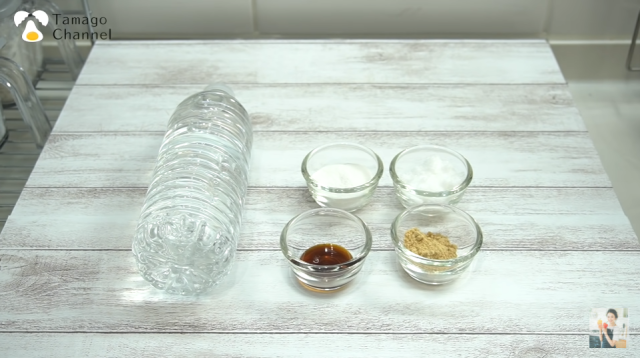
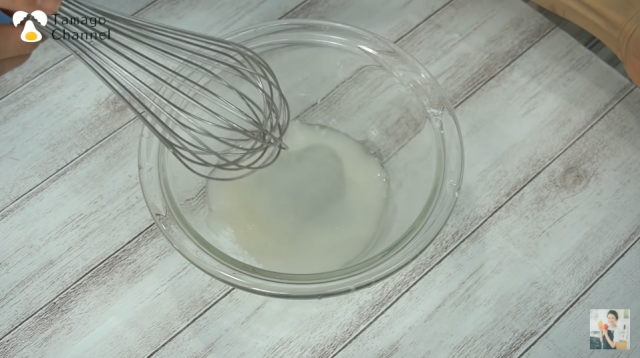
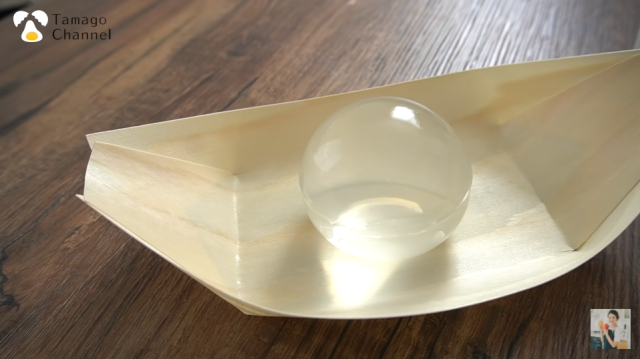
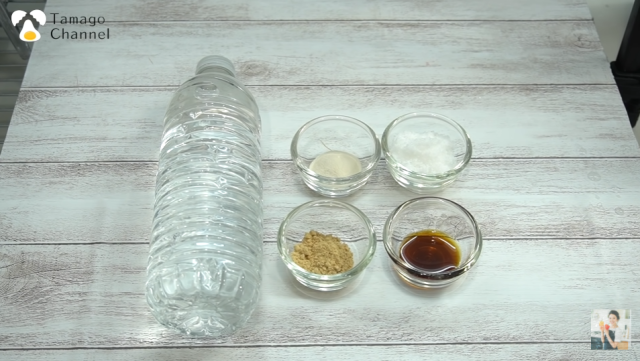
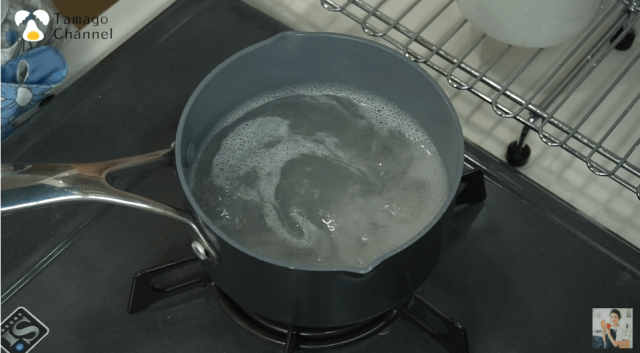
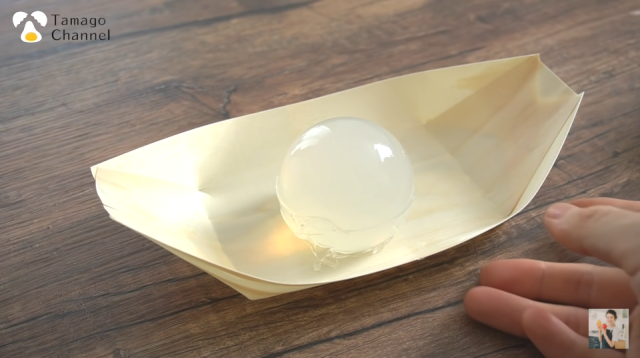

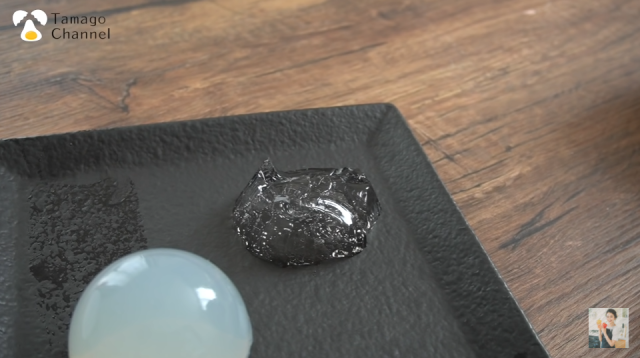

 How to make one of the most complicated but awesome themed sushi rolls【Video】
How to make one of the most complicated but awesome themed sushi rolls【Video】 We made magical crystal chocolate tarts, fit for a mage with a sweet tooth! 【Sora Kitchen】
We made magical crystal chocolate tarts, fit for a mage with a sweet tooth! 【Sora Kitchen】 Celebrate the incoming Attack on Titan movie with a suitably colossal Oreo cookie 【Recipe】
Celebrate the incoming Attack on Titan movie with a suitably colossal Oreo cookie 【Recipe】 How to make a cartoon cheesecake that looks like Swiss cheese
How to make a cartoon cheesecake that looks like Swiss cheese Playing with water: Japanese Twitter user shares how to create jiggly water jelly!
Playing with water: Japanese Twitter user shares how to create jiggly water jelly! Disney princesses get official manga makeovers for Manga Princess Cafe opening in Tokyo
Disney princesses get official manga makeovers for Manga Princess Cafe opening in Tokyo Is the new Shinkansen Train Desk ticket worth it?
Is the new Shinkansen Train Desk ticket worth it? Beautiful new Final Fantasy T-shirt collection on the way from Uniqlo【Photos】
Beautiful new Final Fantasy T-shirt collection on the way from Uniqlo【Photos】 Randomly running into a great sushi lunch like this is one of the best things about eating in Tokyo
Randomly running into a great sushi lunch like this is one of the best things about eating in Tokyo Daiso opens massive new 25,392-square foot Tokyo flagship store with its two sub-brands included
Daiso opens massive new 25,392-square foot Tokyo flagship store with its two sub-brands included What does “Konnichiwa” really mean? Understanding Japanese greetings
What does “Konnichiwa” really mean? Understanding Japanese greetings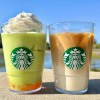 Is Starbucks Japan’s new Gohobi Melon Frappuccino really the ultimate melon Frappuccino?
Is Starbucks Japan’s new Gohobi Melon Frappuccino really the ultimate melon Frappuccino?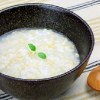 What do you eat when you catch a cold? We asked 11 of our Japanese reporters
What do you eat when you catch a cold? We asked 11 of our Japanese reporters TeamLab Borderless moves from Odaiba to Azabudai with new exhibits for 2024
TeamLab Borderless moves from Odaiba to Azabudai with new exhibits for 2024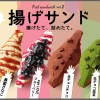 Fried sandwiches arrive in Tokyo, become hot topic on social media
Fried sandwiches arrive in Tokyo, become hot topic on social media Our Japanese reporter visits Costco in the U.S., finds super American and very Japanese things
Our Japanese reporter visits Costco in the U.S., finds super American and very Japanese things New Studio Ghibli bedding sets are cool in all senses of the word
New Studio Ghibli bedding sets are cool in all senses of the word We try out “Chan Ramen”, an underground type of ramen popular in the ramen community
We try out “Chan Ramen”, an underground type of ramen popular in the ramen community New Pokémon cakes let you eat your way through Pikachu and all the Eevee evolutions
New Pokémon cakes let you eat your way through Pikachu and all the Eevee evolutions There’s a park inside Japan where you can also see Japan inside the park
There’s a park inside Japan where you can also see Japan inside the park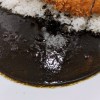 Japanese black curry “experiment” takes place at an unlikely restaurant branch in Tokyo
Japanese black curry “experiment” takes place at an unlikely restaurant branch in Tokyo Japanese convenience store packs a whole bento into an onigiri rice ball
Japanese convenience store packs a whole bento into an onigiri rice ball New definition of “Japanese whiskey” goes into effect to prevent fakes from fooling overseas buyers
New definition of “Japanese whiskey” goes into effect to prevent fakes from fooling overseas buyers Foreign English teachers in Japan pick their favorite Japanese-language phrases【Survey】
Foreign English teachers in Japan pick their favorite Japanese-language phrases【Survey】 Uniqlo opens its first Furugi Project secondhand clothing pop-up shop in Tokyo
Uniqlo opens its first Furugi Project secondhand clothing pop-up shop in Tokyo Studio Ghibli releases Kiki’s Delivery Service chocolate cake pouches in Japan
Studio Ghibli releases Kiki’s Delivery Service chocolate cake pouches in Japan Japan’s bone-breaking and record-breaking roller coaster is permanently shutting down
Japan’s bone-breaking and record-breaking roller coaster is permanently shutting down Toyota built a life-sized Miraidon Pokémon and are letting people test drive it this weekend
Toyota built a life-sized Miraidon Pokémon and are letting people test drive it this weekend Foreign passenger shoves conductor on one of the last full runs for Japan’s Thunderbird train
Foreign passenger shoves conductor on one of the last full runs for Japan’s Thunderbird train Kyoto bans tourists from geisha alleys in Gion, with fines for those who don’t follow rules
Kyoto bans tourists from geisha alleys in Gion, with fines for those who don’t follow rules Studio Ghibli unveils Mother’s Day gift set that captures the love in My Neighbour Totoro
Studio Ghibli unveils Mother’s Day gift set that captures the love in My Neighbour Totoro Domino’s Japan now sells…pizza ears?
Domino’s Japan now sells…pizza ears? New Japanese KitKat flavour stars Sanrio characters, including Hello Kitty
New Japanese KitKat flavour stars Sanrio characters, including Hello Kitty Sales of Japan’s most convenient train ticket/shopping payment cards suspended indefinitely
Sales of Japan’s most convenient train ticket/shopping payment cards suspended indefinitely Sold-out Studio Ghibli desktop humidifiers are back so Totoro can help you through the dry season
Sold-out Studio Ghibli desktop humidifiers are back so Totoro can help you through the dry season Japanese government to make first change to romanization spelling rules since the 1950s
Japanese government to make first change to romanization spelling rules since the 1950s Ghibli founders Toshio Suzuki and Hayao Miyazaki contribute to Japanese whisky Totoro label design
Ghibli founders Toshio Suzuki and Hayao Miyazaki contribute to Japanese whisky Totoro label design Doraemon found buried at sea as scene from 1993 anime becomes real life【Photos】
Doraemon found buried at sea as scene from 1993 anime becomes real life【Photos】 Tokyo’s most famous Starbucks is closed
Tokyo’s most famous Starbucks is closed One Piece characters’ nationalities revealed, but fans have mixed opinions
One Piece characters’ nationalities revealed, but fans have mixed opinions We asked a Uniqlo employee what four things we should buy and their suggestions didn’t disappoint
We asked a Uniqlo employee what four things we should buy and their suggestions didn’t disappoint Princesses, fruits, and blacksmiths: Study reveals the 30 most unusual family names in Japan
Princesses, fruits, and blacksmiths: Study reveals the 30 most unusual family names in Japan Studio Ghibli’s new desktop Howl’s Moving Castle will take your stationery on an adventure
Studio Ghibli’s new desktop Howl’s Moving Castle will take your stationery on an adventure How to make yoghurt ramen with instant noodles
How to make yoghurt ramen with instant noodles How to make a “curry rice bowl” using instant oatmeal instead of rice 【SoraKitchen】
How to make a “curry rice bowl” using instant oatmeal instead of rice 【SoraKitchen】 We try a method for making ice cream that doesn’t require a freezer【SoraKitchen】
We try a method for making ice cream that doesn’t require a freezer【SoraKitchen】 Beautiful Japanese cake looks like a slice of the ocean frozen in time【Photos】
Beautiful Japanese cake looks like a slice of the ocean frozen in time【Photos】 Our batch of homemade Oreos – Why didn’t we think of this before?
Our batch of homemade Oreos – Why didn’t we think of this before? 15 beautiful Japanese sweets to cool you down this summer
15 beautiful Japanese sweets to cool you down this summer We try an easy, cheesy, Italian-inspired camp meal using instant noodles【Recipe】
We try an easy, cheesy, Italian-inspired camp meal using instant noodles【Recipe】 Making a traditional Japanese dessert from “heaven grass”【Photos】
Making a traditional Japanese dessert from “heaven grass”【Photos】 Experience the “Color of Water” from a 250-year-old Japanese confection maker!
Experience the “Color of Water” from a 250-year-old Japanese confection maker! How to make a beautiful matcha cheesecake using a microwave, toaster oven, and hardly any effort
How to make a beautiful matcha cheesecake using a microwave, toaster oven, and hardly any effort Put a unique twist on your oatmeal by turning it into some Japanese comfort food
Put a unique twist on your oatmeal by turning it into some Japanese comfort food This super easy cold Korean spicy ramen dish will make summer 100 times more delicious
This super easy cold Korean spicy ramen dish will make summer 100 times more delicious Putting popcorn in your brownies is a great way to liven them up while skipping the nuts【Recipe】
Putting popcorn in your brownies is a great way to liven them up while skipping the nuts【Recipe】 Turn a persimmon into a pudding with one simple ingredient
Turn a persimmon into a pudding with one simple ingredient How to make cheese with just three ingredients【SoraKitchen】
How to make cheese with just three ingredients【SoraKitchen】 Häagen-Dazs Japan comes out with sticky-sweet new line of ice cream containing … mochi!
Häagen-Dazs Japan comes out with sticky-sweet new line of ice cream containing … mochi!
Leave a Reply